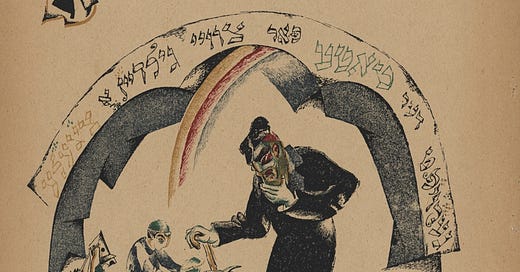One of the most puzzling aspects of the Passover seder is the inclusion, right at the end, of several folk songs. They do not seem to be connected with the themes of freedom and national identity that underlie the seder. They do have a religious element but, with one exception, they are undoubtedly folk songs that might be sung at any time, and perhaps once were.
(For those who don’t know, the Passover seder is a ritualised family meal held on the first evening of the festival, in which many passages are read and sung commemorating freedom from slavery and the exodus from Egypt. The book containing these passages is known as a Haggadah.)
Jaunty, and with words that easily remembered, it is sometimes said that these songs are sung to keep the children awake. But that explanation makes little sense. If the songs are intended to keep the children awake they should be sung much earlier, in what is likely to be a long (and for the kids, often tedious) evening. There is little point in singing songs at the end of the evening, to keep the children awake when they are about to go to bed.
The best known of these songs, had gadya, first appeared in a Haggadah printed in Prague in 1590; although the song itself is written in Aramaic which suggests it might have originated much earlier, Aramaic was rarely in use in 1590. It is a ‘cumulative’ song, like the House that Jack Built, or There Was an Old Woman who Swallowed a Fly, each verse building on and adding something to the previous one. In had gadya a father buys a goat, a cat kills the goat, a dog kills the cat and so on. It ends with a butcher killing an ox, the Angel of Death killing the butcher and God killing the Angel of Death. So it has a sort of religious message, and the song is sometimes regarded as a religious allegory, dealing with the history of Israel; but had gadya has also taken on a life of its own, outside of the Passover seder, one with very little religious connection.
Sometimes claimed, without much evidence, to be the first song ever written for children, and certainly one with tremendous charm, despite its succession of cartoon-like killings, had gadya has made a name for itself in literature, music and art. James Joyce quoted it in Ulysses:



